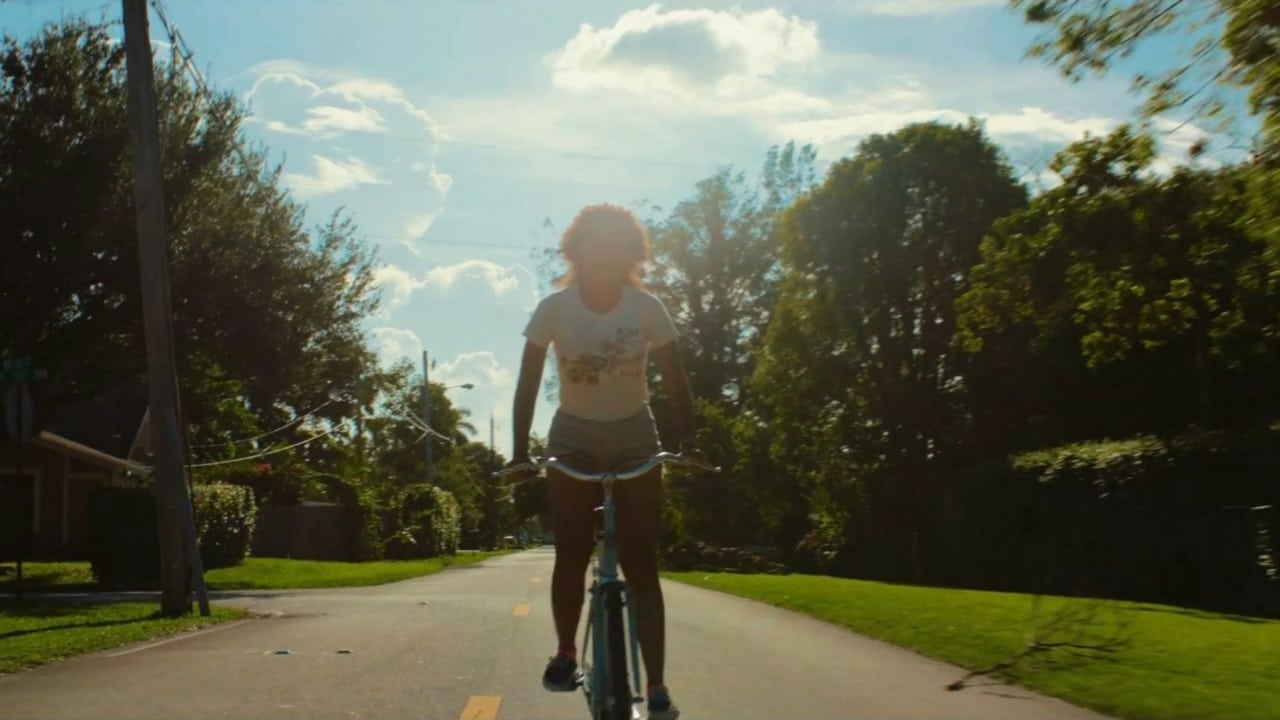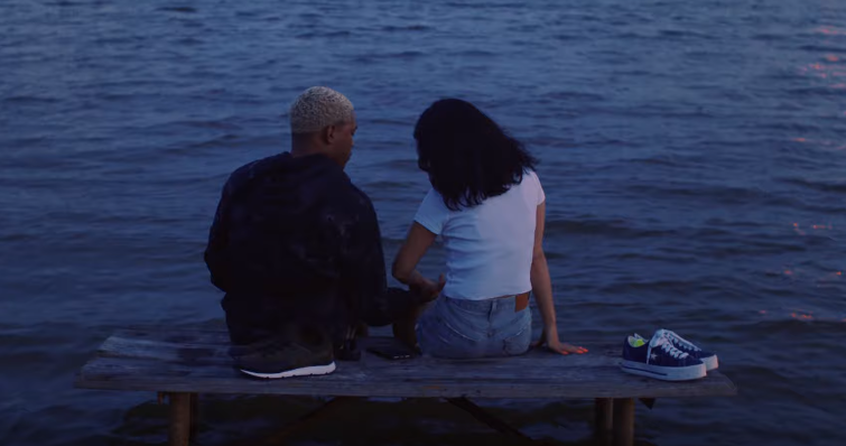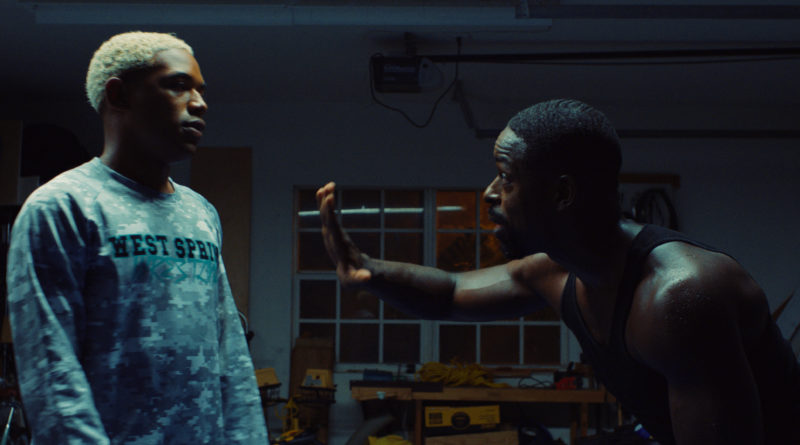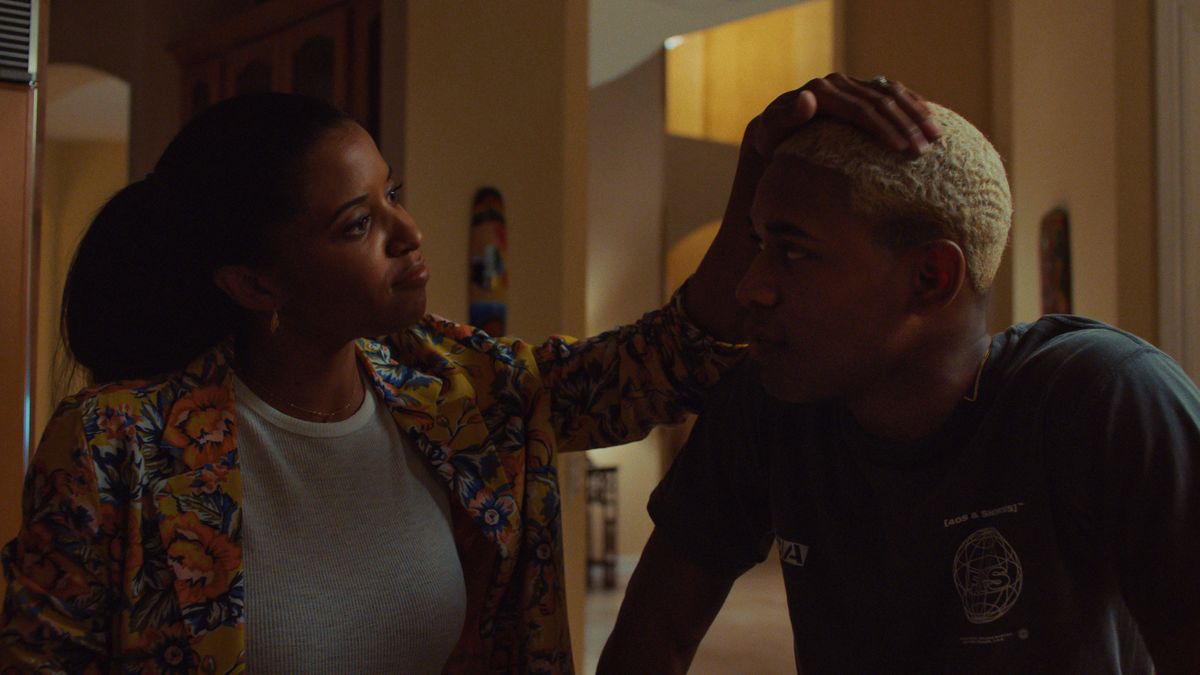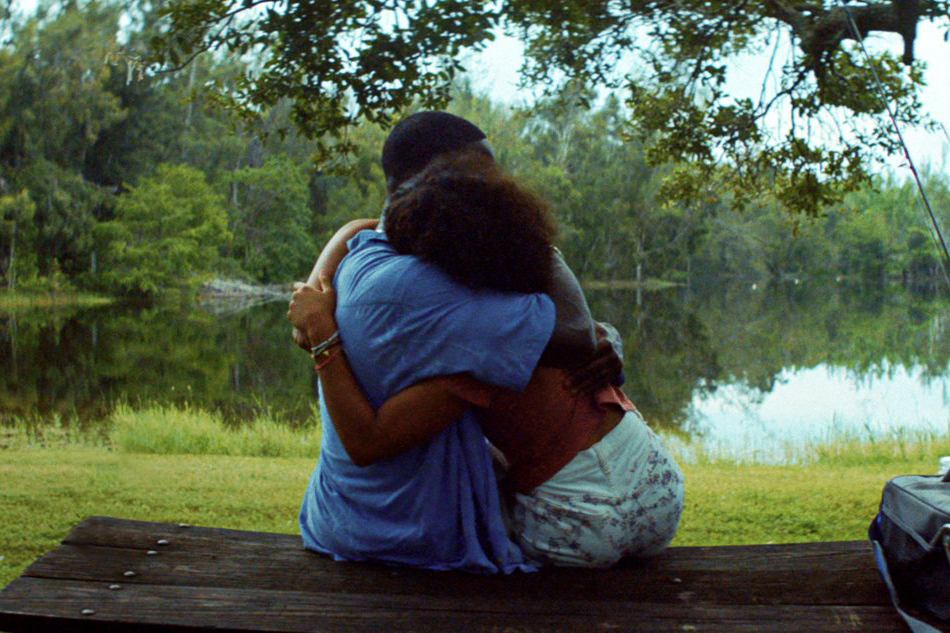There’s a sense of invulnerability that suffuses the first ten minutes of Waves. In a signature sign of his confidence behind the camera, director Trey Edward Shults sets up his lens inside a car moving at high speed along a Miami freeway. As the camera does several 360 degree turns from right about the middle armrest, it captures the driver, Tyler (Kelvin Harrison Jr.), and his girlfriend, Alexis (Alexa Demie), singing along with the tunes pumping out of the radio, and grinning as widely as the vista of the Atlantic Ocean behind them.
Tyler even has his foot out the window, that’s how confident he is that the world is full of good things and that its dangers are safely at bay. The car steadily approaches the car ahead of it, enough for you to wonder if this is how this scene is going to play out, but no crash occurs. The two are safe in their invulnerability – for now.
The opening kaleidoscopic window into Tyler and Alexis’ lives gives us other views of the world they live in, the world that is their oyster. They meet with friends. They sing along with more songs. Their high school cheers them on. They laugh. They kiss waist deep in the same Atlantic Ocean they sped past earlier.
But that crash is coming.
Tyler is black and Alexis is Latina, but Waves is not about race – not on its surface, anyway. It might be a problem if it were, because Shults is white, and the majority of the people he follows are not. In 2020, that’s a cause for some concern, because we are rightly increasing our scrutiny of who has the right to tell which stories.
Fortunately, Shults has the type of touch that tends to quell such worries. He doesn’t pretend to know what he doesn’t know. He only knows human nature, and that human beings often steer themselves toward tragedy. It’s something he’s explored to harrowing effect in his two previous features, Krisha and It Comes at Night. And by his not focusing on race, a powerful examination of it creeps in around the edges, and is more profound for that fact.
What happens to Tyler and Alexis is not as singular as how it happens, and that’s where Shults shines. It starts, though, with a career-threatening injury for the accomplished athlete and high school senior. Tyler is a star wrestler, but his shoulder has been bothering him, and a doctor reveals the bleak news: surgery now, or career never.
That’s not what Tyler opts to do, because Tyler wants to wrestle – and because Tyler’s dad, Ronald (Sterling K. Brown), pushes him to within an inch of dereliction of his duties as a parent. Ronald tells Tyler that they have to work ten times as hard; the reasons are implied. A shrewd viewer may notice, though, that it’s possible the very place Tyler hurt his shoulder was while arm-wrestling his dad.
This is Tyler’s story, but it’s also his sister Emily’s story, and how it comes to be that is one of the film’s structural masterstrokes. Shults isn’t afraid to shift focus within this story by shifting focus within this family. Emily (Taylor Russell) is a little more than an afterthought in this film’s opening half, but we’re going to get her story before all is said and done. And though it’s a different story informed by different circumstances and different life choices, it’s equally emotionally penetrating.
It’s a cliché to say that the location functions as a character of its own, but it’s a cliché that applies in the case of Florida, which has become the backdrop for so much great independent filmmaking this past decade. Starting with Spring Breakers and continuing on through Moonlight and The Florida Project, something about the Florida setting just cuts straight to the heart of the issues of identity and the American dream that these films seek to explore. A geographical cross-section of so many different elements of American society, Florida also becomes a canvas to explore the struggle for the soul of modern Americans. This is no less true in Waves than those others.
Shults follows admirably in the footsteps of Harmony Korine, Barry Jenkins and Sean Baker; in some ways, his is even a surpassing achievement. Although there are touches of each of these predecessors in Shults’ work, he brings a distinct stressful energy to the proceedings that ramps up the intensity. Shults’ previous features are both loosely characterised as horror, with Krisha examining an alcoholic’s disastrous return to her family Thanksgiving, and It Comes at Night providing a minimalist glimpse at the type of plague that might end the world.
Waves, too, has its horror elements, which are embedded into the sound design. As various scenes cascade out of control, with good intentions devolving into serious disasters, the constant hum of music – hip hop songs, but also a grinding score by Trent Reznor and Atticus Ross – is an underlying stressor. In the mid-film crescendo, noise and strobing light build to a state of unbearable disorientation.
Ever conscious of how trauma and beauty commingle, Shults also finds the glow in this world. Emily’s relationship to a new suitor (Lucas Hedges) is one such glow. They experience some variation on what Tyler and Alexis experience, even with that same 360 degree camera trick inside a car, accompanied by the radio sing-along. But the outcome may differ, depending on chance, and choice.
The performances are uniformly special. Harrison and Russell have the most to do, and they are just riveting, with Harrison possibly having a leg up – credit some familiarity with the director on that one. (Harrison played a central role in It Comes at Night.) The most tricky work may be required of Brown, who proves to be a lot deeper than the driven father who bristles at having his authority questioned. He’s carrying a load that broke lesser men than him, and it’s not surprising that he broke his son’s shoulders when transferring that metaphorical weight. The American dream is a heavy thing.
